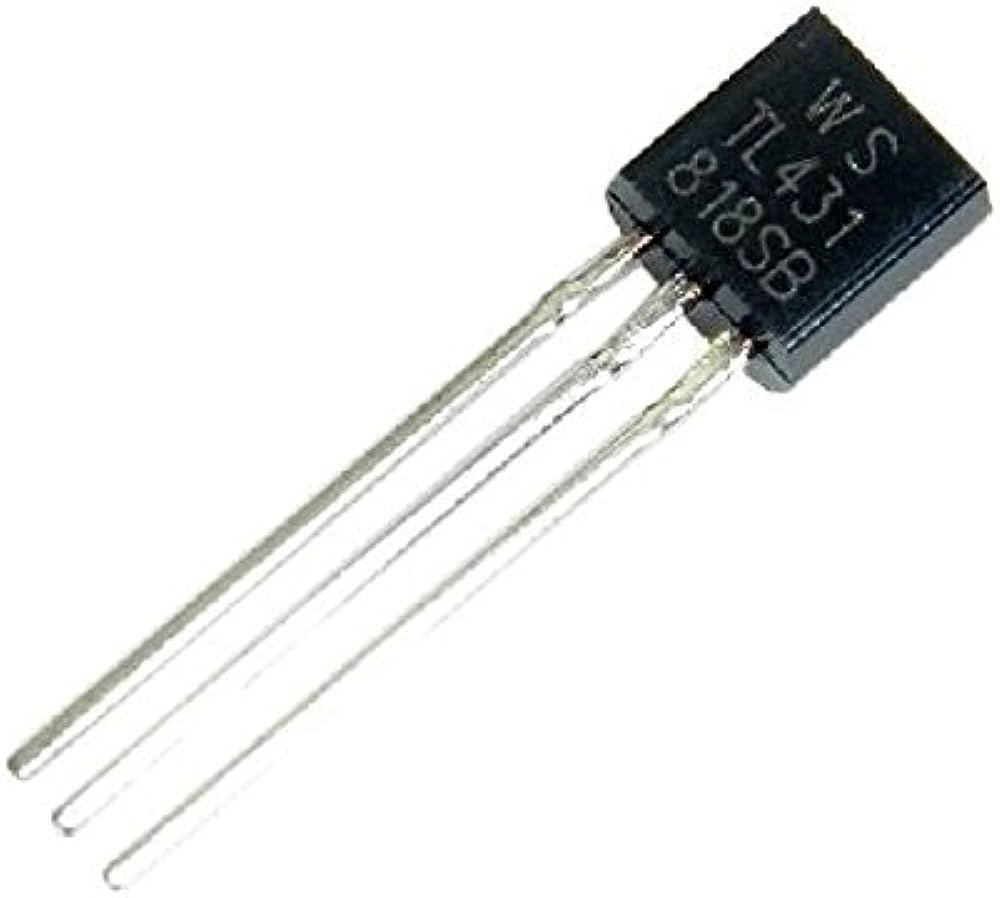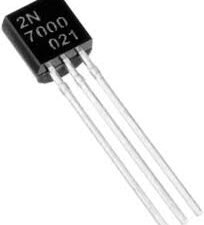TL431 – Programmable Shunt Voltage Reference ( Pack of 2)
5 in stock
The TL431 H818 is a programmable shunt voltage reference that provides a precise voltage regulation over a wide range. It operates as an adjustable Zener diode with an output voltage programmable from 2.5V to 36V using an external resistor divider. This component is widely used in power supplies, voltage regulation circuits, and feedback control loops due to its high accuracy and thermal stability.
The TL431 has three terminals: Reference (Ref), Anode (A), and Cathode (K). It functions as an active shunt regulator, maintaining a constant voltage by adjusting the current flow. The H818 marking typically refers to a specific batch code or manufacturer variant.
With a typical output voltage tolerance of ±0.5% to ±2%, it is ideal for switching power supplies (SMPS), battery chargers, and overvoltage protection circuits. Due to its versatility, low cost, and reliability, the TL431 is a popular choice in industrial and consumer electronics applications.
₹8.73 ₹21.24 (Incl. GST)
5 in stock
TL431 – Programmable Shunt Voltage Reference
Introduction
The TL431 is a programmable shunt voltage reference widely used in power regulation circuits. It functions like a precision-adjustable Zener diode, providing stable voltage references from 2.5V to 36V. Unlike fixed voltage regulators, the TL431 allows users to program the output voltage using two external resistors. Due to its accuracy and versatility, it is commonly found in switching power supplies, battery chargers, voltage monitoring circuits, and precision voltage regulation systems.
Working Principle
The TL431 operates as a shunt regulator, meaning it conducts current to maintain a stable voltage across its terminals. It has three pins:
- Reference (REF)
- Anode (A)
- Cathode (K)
The device maintains a 2.5V internal reference at the REF pin. By using two external resistors (R1 and R2), the output voltage can be adjusted based on the equation:
VOUT=VREF×(1+R1R2)V_{\text{OUT}} = V_{\text{REF}} \times \left(1 + \frac{R1}{R2} \right)
Since V_REF = 2.5V, adjusting the ratio of R1 and R2 allows precise control over the output voltage from 2.5V to 36V.
Key Features of TL431
- Adjustable Output Voltage: 2.5V to 36V
- Low Dynamic Impedance: ~0.22Ω
- Operating Current Range: 1mA to 100mA
- Temperature Stability: ±0.2% to ±1% tolerance (depending on the variant)
- Available Packages: TO-92, SOT-23, SOIC-8, etc.
Common Applications of TL431
1. Power Supply Regulation (SMPS Feedback Control)
TL431 is widely used in switch-mode power supplies (SMPS) for voltage feedback control. It helps regulate the output voltage by adjusting the pulse width of a switching circuit. The TL431 provides a stable reference voltage, improving power efficiency.
2. Precision Voltage Regulation
In applications where a fixed Zener diode is too inaccurate, TL431 is used as a precise voltage regulator. The adjustable output voltage ensures stability and flexibility in design.
3. Battery Chargers
Battery charging circuits use TL431 for voltage monitoring and overcharge protection. It ensures that the charging voltage does not exceed safe limits, thereby protecting the battery.
4. Overvoltage Protection
TL431 is used in circuits to limit excessive voltage. If the voltage exceeds the set reference value, TL431 starts conducting and prevents damage to sensitive components.
5. Current Limiting Circuits
It can be used in constant current sources to provide stable and controlled current, useful in LED drivers and sensor circuits.
6. Voltage Monitoring in Microcontrollers
TL431 is used to monitor voltage levels in microcontroller-based circuits, ensuring that the system operates within a specified voltage range.
Advantages of TL431
✔ High Precision – More accurate than regular Zener diodes
✔ Adjustable Output Voltage – Offers flexibility in design
✔ Low Cost – Affordable component for voltage regulation
✔ Wide Voltage Range – 2.5V to 36V output
✔ Compact Size – Available in small SMD and TO-92 packages
Conclusion
The TL431 is a versatile, programmable shunt voltage reference used for voltage regulation, power supply feedback, overvoltage protection, and current limiting. Its ability to provide a stable, adjustable reference voltage makes it an essential component in switching power supplies, battery chargers, and industrial electronics. Its high precision and reliability make it a preferred choice over traditional Zener diodes in many applications.





